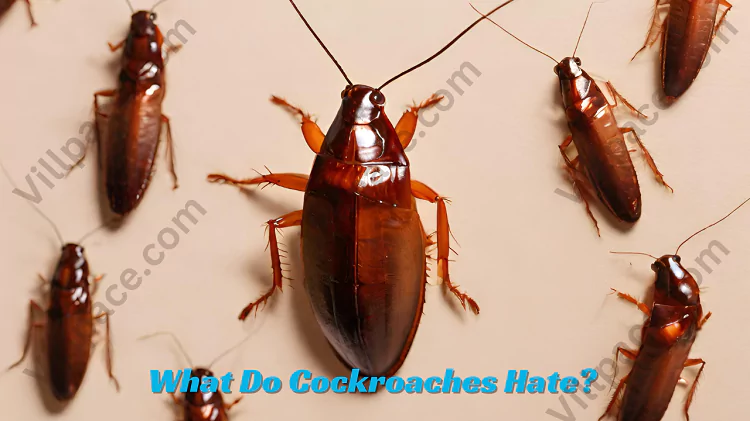Many powerful roach repellents exist in Mother Nature’s vast pantry, if you know which scents and substances cockroaches despise. Understanding roaches’ antipathies allows clever deployment of targeted odor weapons driving them away.
Why Repulsives Work?
Powerful natural cockroach aversions developed over millions of years guiding them towards nourishment while avoiding environmental toxins or predators.
Humans now turn the tables, weaponizing these ingrained odor sensitivities. Skillfully placed repulsive aromas trigger hardwired escape reflexes, sending roaches frantically fleeing.
Botanical extracts, spices, citrus, and essential oils constitute nature’s unsuspected roach mace if strategically positioned. Their piercing redolence overwhelms delicate roach nasal receptors, ensuring vacated premises.
Scents They Abhor
Science confirms cockroaches intensely shun certain common fragrances, leveraged best by diffusing through indoor air:
- Mint – Spearmint, peppermint or wintergreen oil redolence causes roach nausea
- Bay Leaves – Pulverized dry bay leaf particles sting soft roach tissues
- Citrus Oils – Limonene-rich extracts from lemons/orange peel cells damage roaches
- Cucumber – Bitter cucurbitacins in vapors/residues irritate roaches
- Onions – Pungent sulfur compounds in onion emissions repulse cockroaches
- Garlic – Peeled garlic cloves or oil extracts equally dismay cockroaches
Vaporizing these substances generates intense sensory overload forcing roaches into speedy exile.
Why These Scents Repel?
Several unique chemical properties within these plants elicit severe roach reactions:
- Piercing Volatility – Causes fast diffusion permeating tiny roach olfactory organs
- Toxic Irritation – Burns delicate roach epithelial membranes upon contact
- Suffocating Density – Thick vapor density makes breathing distressful
- Soapy Residues – Leaves trace vestiges with lasting repellent effects
In cockroach terms, these are unbearable nasal assaults. Avoidance becomes urgent as the aromas concentrations climb.
Most Effective Delivery Methods
Dispersing reviled smells for maximum roach-repelling requires careful tactical considerations:
Measure Vapor Density
Thin mists Fail to adequately flush concealed wall voids or cracks. Create dense fog-like saturation for accessing tight spaces.
Multi-Point Grids
Surround zones in 360° aromatic territory with diffusers on all sides to leave no easy exits.
Lucent Loitering
Daylight dismantles many essential oil particles. Reapply fresh batches starting nights when roaches operate.
Layer Scents
Don’t rely solely cucumber or spearmint alone. Alternate mint, garlic, onion, lemon extracts to overwhelm roaches sensory capacity.
Monitor Concentrations
Replenish dissipating aromas before they fade below repellent intensity levels.
Attract THEN Repel
Bait roaches first with tempting treats to congregate them, THEN blast with aversion agents for maximum effect.
Getting application particulars right ensures even deep wall crevice-dwelling roaches experience sensory-overloading exile.
Setting Scent Traps
Beyond scattering or spraying hated scents randomly, crafting targeted odor traps boosts efficiency:
Impregnated Stations
Soak cotton swabs/balls with concentrated plant oils to create saturated emitters. Insert these along known runways or nest sites. Lidded plastic containers prevent premature evaporation while allowing scent percolation.
Infused Adhesives
Adding peppermint or clove powder into non-toxic sticky traps makes them doubly repulsive. Roaches avoiding contact with the traps still abhor residue traces left behind.
Tactical Mist Mines
Ring susceptible areas with inverted cups filled quarter way with hated scents. Mist rising from periphery provides 360° vapor barrier.
Careful scent trap placements turn cockroaches instinctual odor avoidance against themselves!
Why Olfactory Defenses Work?
Humansoften overlook senses beyond vision for pest control cues. But smell constitutes a dominant navigational sense for roaches. Where sight fails them in dark crevices, scent sensations take over.
This allows successfully manipulating behavior through their exquisite olfaction. Take advantage by diffusing nature’s aromatic insect repellents already proven noxious to roaches over eons.
Conclusion
Cockroach odor affinities and aversions stretch back hundreds of millions of years. Thankfully, botanical extracts redolent with harsh terpenes, sulfides or irritating compounds provide powerful roach routing solutions.
Strategically deploying scent-saturated stations, vapor grids and adhesive traps produce protective odor barricades bidding roaches a tearful farewell! Outsmart infestations by targeting this ancient sensory vulnerability.

Mark Thompson, a seasoned pest controller, is renowned for his expertise in keeping homes and businesses free from unwanted intruders. With a passion for environmental sustainability and a deep understanding of pest behavior, Mark has become a trusted authority in the industry.
